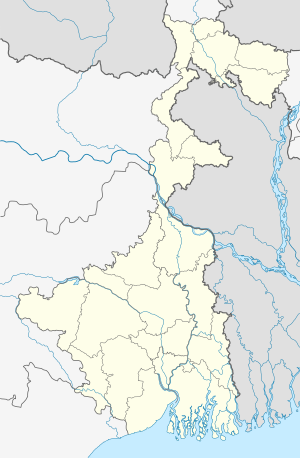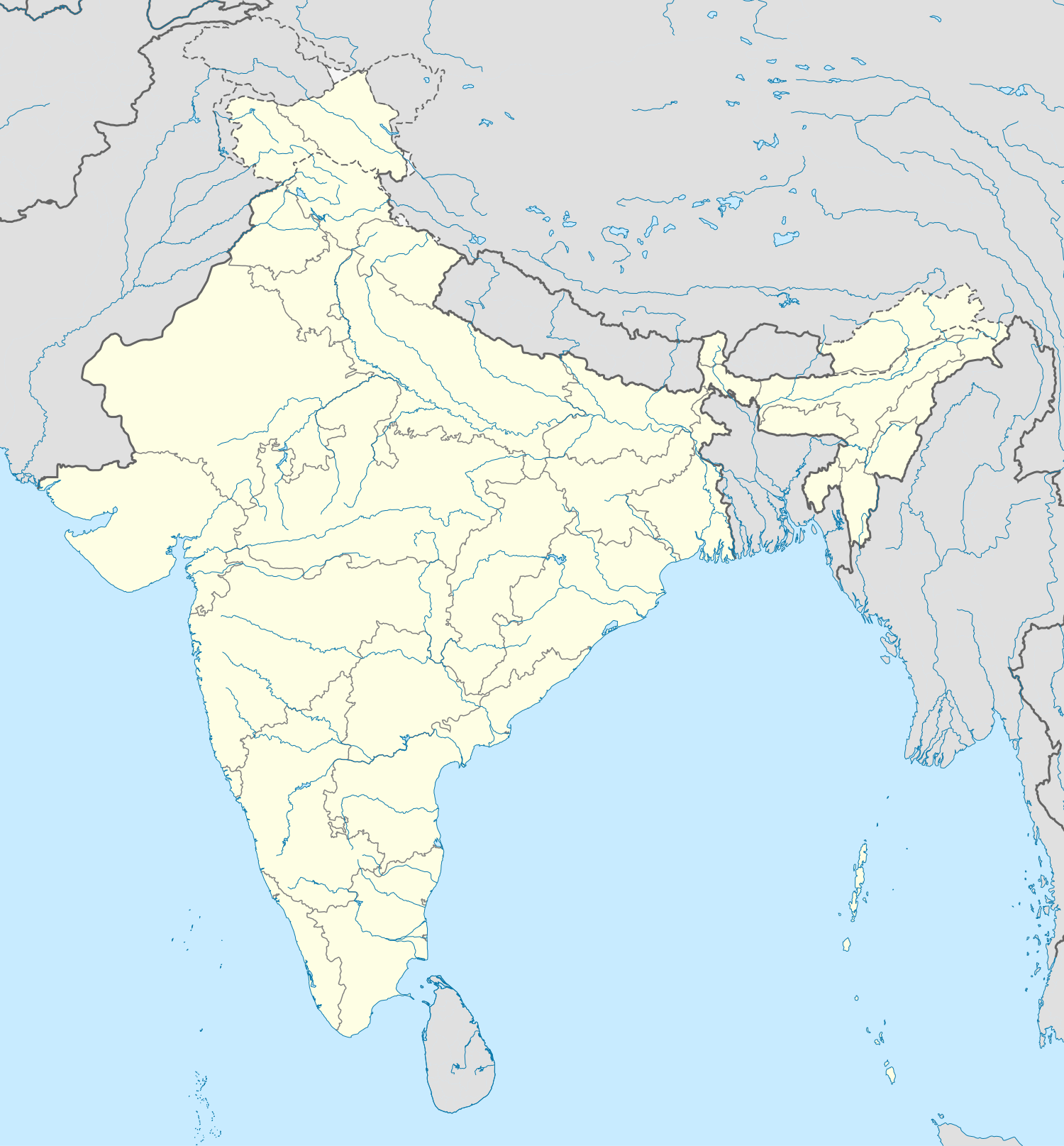Gar Mandaran
Garh Mandaran is a village and a gram panchayat in Goghat II CD Block in Arambag subdivision of Hooghly district in the state of West Bengal, India.
Garh Mandaran | |
|---|---|
Village | |
 Garh Mandaran Location in West Bengal, India  Garh Mandaran Garh Mandaran (India) | |
| Coordinates: 22.874799°N 87.665972°E | |
| Country | |
| State | West Bengal |
| District | Hooghly |
| Elevation | 42 m (138 ft) |
| Population (2011) | |
| • Total | 6,264 |
| Languages | |
| • Official | Bengali, English |
| Time zone | UTC+5:30 (IST) |
| PIN | 712612 (Mandaran) |
| Telephone/STD code | 03221 |
| Lok Sabha constituency | Arambagh |
| Vidhan Sabha constituency | Goghat |
| Website | hooghly |
Overview
The ruins of a fort at Gar Mandaran provided the setting for Bankim Chandra Chatterjee’s novel Durgeshnandini.[1]
Durgeshnandini is a romantic novel, based partly on history and partly on hearsay. The story centres around the attack and occupation of Gar Mandaran stronghold of Raja Birendra Singh, linked to the Bishnupur Raj, by the Pathans who were then entrenched in Odisha. The Mughal general Man Singh’s son, Jagat Singh, was despatched to keep the Pathans at bay. Jagat Singh fell in love with Tilottama, the beautiful daughter of Raja Birendra Singh. The Pathans captured the fort, killed Raja Birendra Singh and held Jagat Singh and Tilottama, but a fatal attack on the Pathan general Kotlu Khan, turned things around.[2]
Durgeshnandini, published in 1865, took the literary world by storm and was considered an epoch-making novel. It went through 13 editions during Bankim Chandra’s life-time.[2]
History
Around the time when Bakhtiyar Khilji (1204–1206) came to Bengal, the region was divided into five parts – Rarh, Bagri, Vanga, Barendra, and Mithila. Vanga was further subdivided into three parts – Lakhanabati, Subarnagram and Saptagram. When the frontiers of Bengal were expanded during Mughal rule, there were three prominent administrative zones in the Saptagram area – Sirkar Satgaon, Sirkar Selimabad and Sirkar Mandaran. [3]
Demographics
As per the 2011 Census of India, Gar Mandaran had a total population of 6,264 of which 3,242 (52%) were males and 3,022 (48%) were females. Population below 6 years was 734. The total number of literates in Gar Mandaran was 4,100 (74.14% of the population over 6 years).[4]
Transport
Gar Mandaran is on Kamarpukur-Gar Mandaran-Kajla road.[5]It is 2 km from Kamarpukur.
Education
Gar Mandaran High School is a Bengali-medium co-educational institution. It was established in 1944.[6]
References
- "Banking on history, religion to attract tourists in Hooghly". The Hindu, 26 September 2011. Retrieved 24 June 2017.
- Bose, S.K. "Builders of Modern India: Bankim Chandra Chattejee". Visions of the Past. Publications Division, Government of India. Retrieved 24 June 2017.
- Patree, Purnendu (1995) [First published 1979]. Purano Kolkatar Kathachitra (in Bengali). Dey's Publishing. pp. 65–71. ISBN 81-7079-751-9.
- "2011 Census – Primary Census Abstract Data Tables". West Bengal – District-wise. Registrar General and Census Commissioner, India. Retrieved 20 June 2017.
- Google maps
- "Gar Mandaran High School". ICBSE. Retrieved 24 June 2017.